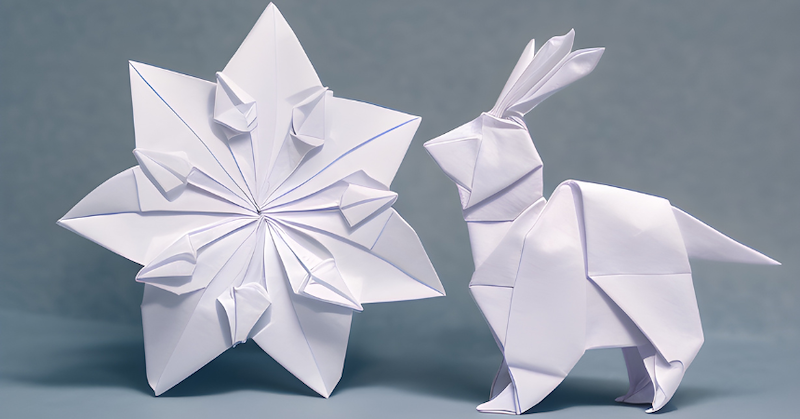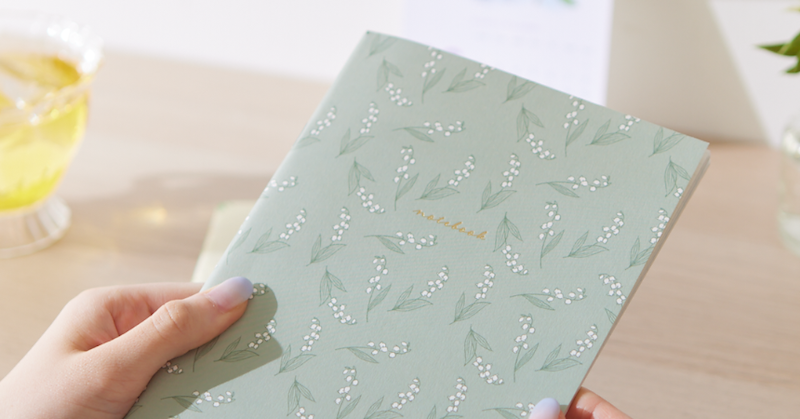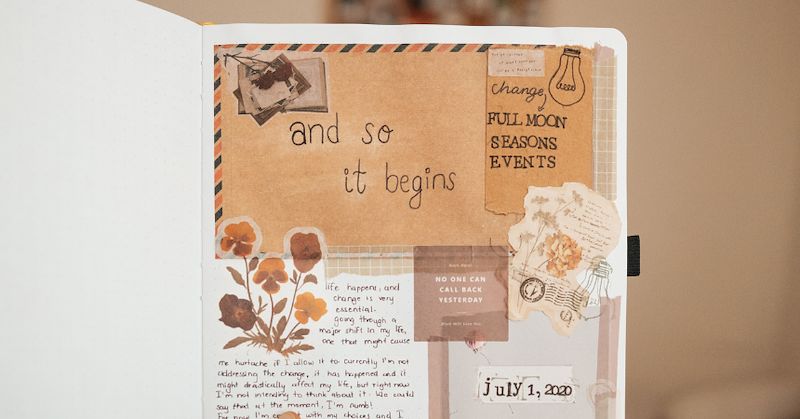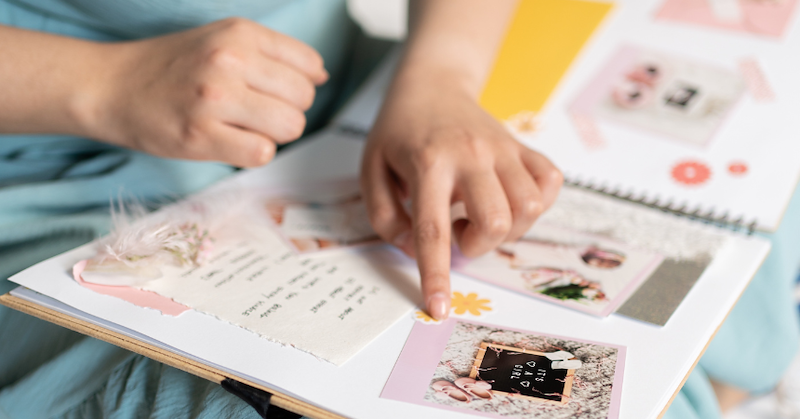
All about Scrapbooking Paper
When it comes to making a scrapbook, you need many supplies. However, scrapbooking paper is the most important one because it determines the quality of your scrapbook. There are many types, colors, and textures of paper, so if you are new to scrapbooking, it may be difficult to choose the proper one to use. Just remember that the paper would have pictures and slightly heavy embellishments like buttons, metal pieces, and origami attached to it, so it has to be thick.
Then again, there are several types of thick papers to choose from. That is why in this blog post, we are bringing you scrapbooking tips by focusing on all information regarding scrapbook paper. Whether you're wondering about paper types or contemplating the question of "Can you use regular paper?"—we've got you covered.
What Is Scrapbooking Paper Used For?
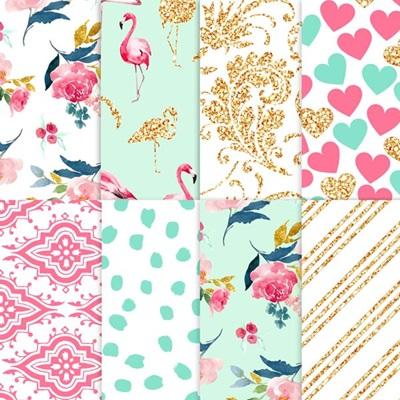
Scrapbooking paper is simply any type of paper used to make scrapbooks. It is, first and foremost, the canvas or foundation of your layout. It's where the photographs, embellishments, notes, and stickers are placed to tell a story. These papers come in different sizes, colors, weight classes, patterns, and textures. The versatility of scrapbooking paper knows no bounds, and it transforms a collection of moments into a visually cohesive and appealing narrative.
When deciding how to set up your scrapbook, you can choose to use a scrapbook album that only has a cover (you have to buy papers to attach to the open rings), an open-ring spiral-bound refillable notebook, or a regular close-ring spiral-bound scrapbooking notebook. When you get a notebook, you don’t need to worry about buying thick paper because you only need decorative ones since the sheets will be your canvas for scrapbooking. However, if you buy an album binder without sheets, you need to buy scrapbook paper that is specifically thicker than regular paper and is acid-free / lignin-free to use as your canvas.
What Type Of Paper Is Best For Scrapbooking?
Selecting the appropriate scrapbooking paper is a decision that involves considerations of durability and archival quality. These are some types of paper you should buy for scrapbooking.
Cardstock
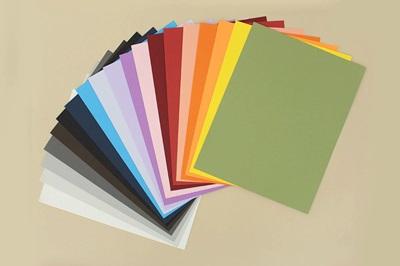
Cardstock, a heavyweight paper known for its durability and versatility, stands out in the world of scrapbooking because it is used as the canvas for the project. Unlike regular paper, cardstock is thicker and more substantial, making it perfect for crafting. That is why it is used to make playing cards, business cards, greeting cards, and scrapbook pages.
Cardstock is also acid-free and comes in different finishes and colors. If you want a light sheen or glitter cardstock, buy the glossy cardstock, but if you are looking for something muted, buy a matte finish if you want a dull coating and textured cardstock if you want a unique texture like wood grain on your paper. Cardstock comes in 6 x 6 inches, 8 x 8 inches, 8 ½ x 11 inches, and 12 x 12 inches, which is usually the standard scrapbook page size. The paper thickness provides support for decorative elements like stickers or embellishments, preventing them from sagging or tearing the paper.
Acetate

Acetate paper is a modern addition to scrapbooking materials. It is distinct for its transparent look, providing a see-through canvas that adds depth and dimension to your scrapbook layouts. You can use it for layering, giving your pages a posh feel. Its smooth and glossy surface acts like a window or frame glass that protects the artwork under it.
Acetate is not the easiest to work with, but it is definitely an exciting choice for those looking to experiment. It also does not fade or wear easily, so it is a durable choice. It comes in different colors and sizes, so you can make some cool effects with the colored versions.
Patterned Scrapbook Paper
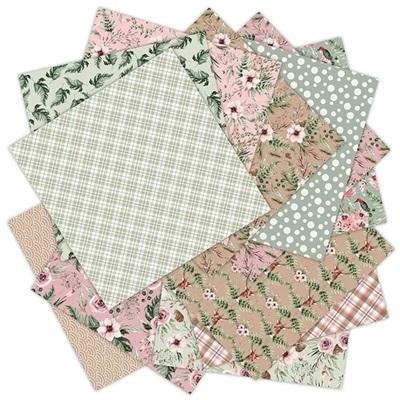
Patterned paper is simply paper that has patterns on it. If you are not specific about buying patterned scrapbook paper, you may end up with origami or washi paper, which comes with various patterns but is way lighter than scrapbook patterned paper. You can use it as the background for the scrapbook or cut it into pieces as decorative elements.
Patterned scrapbook paper is available in styles from florals and geometrics to vintage prints and whimsical patterns, and they are usually sold in sets, so you will get more than one amazing pattern. Its unique feature lies in its ability to set the tone for your entire scrapbook, and they come in 6" x 6" and 12" x 12" sizes and many finish types. It can also have a double-sided pattern (both sizes have the pattern) or a single-sided pattern (one side has the pattern, and the other is plain). Some patterned paper can have glitter or foil accents and embossed finishing.
Kraft / Butcher Paper
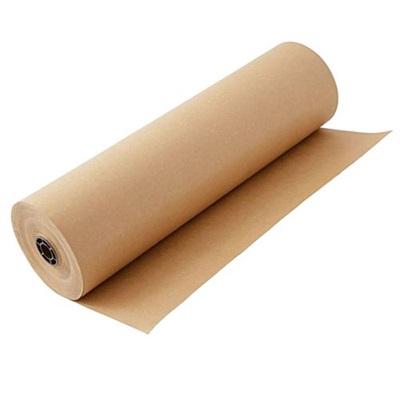
As the name implies, this paper was primarily used for packaging food items. It has a raw and natural appearance with its carton color and has only recently become popular with craft. It gives this earthy feel to your scrapbook when you use it for decorative elements like envelopes to stuff your photos, and it can also provide a backdrop that complements many themes, from vintage and rustic to contemporary and minimalist.
Butcher paper is available in smaller letter sizes to larger sheets suitable for full-page layouts. It is relatively soft, so it cannot serve as the canvas for your scrapbook, but it is great for embellishments.
Can You Scrapbook with Regular Paper?
No, you cannot use regular printing paper as your scrapbook canvas. It is too thin and would not hold the weight of all of your photos and decorative elements popular with scrapbooking. Everyday printer paper can be used for journaling, sketches, and certain decorative elements when scrapbooking, but it cannot be the main background paper.
Conclusion
Scrapbooking paper is not just about sheets and patterns; it's about transforming memories into works of art. This knowledge of paper types gives you the freedom to get creative using the proper paper type.
Have you been looking to buy some high-quality Japanese scrapbooking supplies? Check out our ZenPop stationery store for the best deals.
This article was originally written by our freelance writer Umm-Kulthum Abdulkareem and edited by us.
